Facts about comets. Interesting facts about comets
A comet in the sky is a rare guest. Many interesting facts are known about comets. From time immemorial, people have collected information about celestial bodies and sought to understand their nature, measure their sizes, and understand their structure. The stars appear as small dots, but millions of kilometers separate the curious observer on Earth from the distant star. Without astronomical knowledge, it is impossible to form even an approximate opinion about the size of the celestial body. You will be wrong by several orders of magnitude.

A comet in the sky seems huge next to other celestial bodies. But what are its real dimensions and what is it like?
Any comet consists of 3 parts: the nucleus, the coma and the tail.
Core.
The core is the solid part that contains most mass of the celestial body. The size of the core usually varies within a few kilometers. By earthly standards - big mountain, in cosmic terms - nothing.
Kernel composition:
1. Cosmic dust.
2. Frozen gases.
3. Other solids.
Coma.
Moving along an elliptical trajectory, the comet periodically approaches the Sun, the gases begin to expand and the comet becomes as we see it now. Coma - a cloud of gases around the comet's nucleus. The size of a coma can reach a million kilometers, this is comparable to the size of the Sun. Violent chemical processes occur inside the coma.
The coma and nucleus are the head of the comet, and there is also a tail.
Comet tail.
A cloud of gases, molten by the sun's temperature, begins to dissipate around the comet, and as it moves, this cloud takes the shape of a tail and trails behind it. In the sky we see the tail of a comet, the size of which reaches several solar diameters. The different shapes of comet tails are explained by different gas compositions. Different gases react differently to temperature and have different properties, chemical structures, and expand differently.
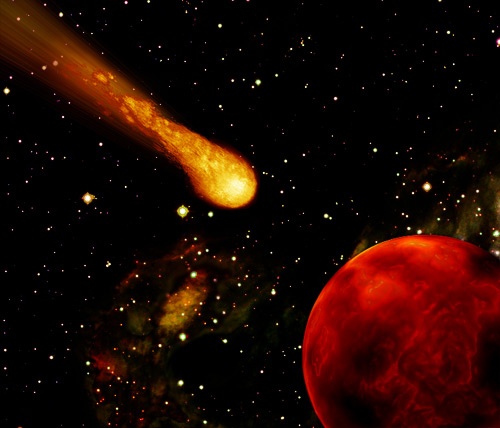
Interesting Facts about comets, collected in one place:
- The word "comet" originates from ancient Greece, meaning "long-haired". Since the Greeks considered them stars with flowing hair.
- Jupiter, due to its enormous mass, can influence gravity and therefore change the direction of comets. Very often the trajectory of movement changes in an incomprehensible way, frightening scientists.
- These celestial bodies can collide with both stars (the Sun) and planets. Researchers have recorded the collision of comet Shoemaker-Levy 9 with Jupiter.
- Strange sounds emanate from the comet, reminiscent of singing. The reason for this phenomenon is the expansion of the gas cloud.
- The comet has a specific smell. It can be simulated on Earth by combining together a mixture of various gases (mainly ammonia, methane, hydrogen).
- In ancient times they were harbingers of wars and disasters.
- Quite often, a comet can have two tails - dust and gas (can extend for hundreds of millions of kilometers, for example, the tail of Hyakutaki is 580 million km). This is due to gravity and the difference in the specific gravity of gases and dust.
- 90% of its mass is concentrated in the core, the length of which can reach 40 km (average - 16 km).
- In deep space, a comet looks like an ordinary block of ice. The tail appears only when approaching the Sun.
- Once every 10 years, a celestial body can be seen with the naked eye.
- In 1910, Halley's tail hit the Earth.
- The first to document the passage of Halley's Comet were the Chinese in 240 BC.
- Scientists have determined that there are more than two million comets in the Solar System.
- On this moment 4 thousand phones are registered.
- In 2014, the first landing of an artificial apparatus on the nucleus of the comet Churyumov-Gerasimenko was carried out. It took 9 years to get closer.
These heavenly guests have been considered omens from above for centuries. Then they were relegated to the status of a dirty snowball. Now they have become one of the most amazing mysteries of nature. In mid-September, a point was set where humanity could get an answer to the question of what comets are. The question is surprisingly practical.
On September 15, at a press conference in Paris, it was announced that a team of scientists had chosen a landing site for the Philae scientific module, which was to land on the surface of comet 67P/Churyumov–Gerasimenko. The Philae module will undock from the Rosetta interplanetary station and land on November 11 this year at the conditional point J. The Philae device will attach to the surface of the comet with a special harpoon anchor, drill and observe how the comet begins to heat up and melt as it approaches the Sun.
Comet Horrors
Comets are the most mysterious celestial bodies solar system. They amazed the imagination of earthlings. They were seen as signs from above, although they were not always successfully interpreted. There has long been a story circulating in manuscripts and books about Pope Calixtus III, the famous Alfonso di Borgia, who, wanting to support the Christ-loving army of the Kingdom of Hungary, which opposed the Turks, declared a comet that appeared in the heavens to be a “sign from above,” supposedly in the shape of a cross. The Turks, however, saw that the comet's tail rather resembled a scimitar, and announced that it was the Almighty who was promising them victory. Nevertheless, the pope's message reached the Hungarian army and inspired it. The Turks near Belgrade were defeated.
Edmund Halley put an end to mysticism in the 18th century. In 1716, he predicted that the same comet that everyone saw in 1682 would arrive in 1758. The great astronomer did not live to see his triumph, but grateful descendants named the comet after him.
By the 20th century, no one believed in ominous omens, but they began to believe in science and pseudo-scientific speculation. With the advent of spectrography, scientists began to study what glows in comets, and they were simply shocked, as was the general public. In 1910, during the next passage of Comet Halley, molecules of HCN, hydrocyanic acid, the salt of which (potassium cyanide) has long become a symbol of a deadly poison, were discovered in its tail. The enlightened world was seized with panic, but nothing terrible happened.
For a long time it was believed that comets are the remains of ancient matter, not disassembled into planets and satellites, from which our Solar system was formed. It was believed that the basis of the comet was gases and water frozen to a solid state, mixed with dust and small stones. While the comet flies far from the Sun, it looks like an asteroid, but as it approaches the star, the frozen substance takes on a gaseous form, taking dust with it.
Thus, a kind of halo or coma is formed around the comet’s nucleus, clearly visible in the light of the Sun. The coma is much larger than the nucleus and can reach millions of kilometers across. Pressure from sunlight blows away molecules of gases and microscopic dust, forming comet tails. The tails of comets are extremely sparse - scientists compare it to one thimble of matter scattered over the whole of Moscow - such is their density. Because the chemical composition comets are quite colorful, different molecules and dust particles are deflected differently by solar radiation, so comets have a separate dust tail and a separate gas tail, and the gas tail itself can have a completely different appearance.
Comet Ikeya–Zang has a beautiful large coma and a straight tail of gas and dust.
It was assumed that comets could contain huge volumes of water. In particular, according to one hypothesis, the Earth's oceans are the water of comets that fell to Earth at the dawn of its existence. The composition of solid particles was assumed to be close to that of stony meteorites. However, when the comet Ikeya-Seki, discovered on September 18, 1965, began to approach the Sun, the scientific world came into a slight shock - the comet turned out to be not only exceptionally bright, but also unusually warm. When its core began to actively collapse from its proximity to the Sun, spectrometers showed the presence of metals such as iron and nickel in its composition. To clarify the details, you will have to wait - comet Ikeya-Seki will return to the Sun only after 1400 years.
Their short life
All comets can be divided into two groups: short-period and long-period. Short-period ones return to the Sun every 200 years or more often - comet Encke rushes to meet it every 3 years, for example. Comet Churyumov - Gerasimenko - every 6 years, a little more. Halley's Comet - every 76 years.
But long-period comets can have an orbital period of tens of thousands of years. All comets can change it if they fly past massive objects during their journey. celestial bodies. For example, the 1996 Comet Hyakutake had an estimated orbital period of 17 thousand years, but the gravity of the outer planets changed its orbit, and now it will not return to us for at least 70 thousand years.
The life of comets that fly to the Sun is often short by astronomical standards - tens, hundreds of thousands of years. The reason is simple - each approach of a comet to the Sun evaporates part of it, the comet is destroyed and in the end either turns into something asteroid-like, or simply into a pile of stones, sand and dust, which gradually disperse in space.
Well, they come from the periphery of our solar system, where they slowly float in the darkness of eternal cold. From there they are pulled out by all sorts of gravitational disturbances and collisions. But this benign picture of the life of comets needed confirmation. And then space stations were sent to comets.
To meet a star
It is very difficult to meet a comet in space when it is heading towards the Sun. It is there, in the black distances, that their speed drops to hundreds and tens of meters per second. The closer to the Sun, the greater the speed, which exceeds 40 km/sec. Otherwise, they will not be able to escape from our luminary, and there is only one road left - to hell.
But in the 1980s, humanity already had some experience and knowledge. And a whole armada of scientific apparatus was waiting for Halley’s comet returning to the Sun. The USSR launched two Vega (Venus-Halley) probes, which were supposed to study Venus and then pass by the comet. The Soviet stations also had equipment from the European Space Agency. At the same time, ESA launched its station, Giotto, and the Japanese launched the Sakigake and Suisei probes.
Vega and Giotto came closest, at 8000 km and 660 km respectively. They found themselves under an avalanche of particles that caused significant damage to the stations. But they learned that the bright comet's core is actually almost black, and only the gases that erupt into space on the sunny side glow. A porous, black, fragile and unpredictable world - the creators of the film "Armageddon" were based on precisely this data, trying to show us a killer comet.
This is how the Giotto probe saw Halley's Comet in 1986
Ten years later, American scientists began preparing for their launches. The pursuit of Halley's comet showed that the dust around the comet can kill any station, and attempts to do something on a collision course, when the relative speed is 70 km/sec, are simply pointless. You need to chase the comet. And in this pursuit there is a chance of capturing particles of cometary material.
In 1999, the Stardust expedition was sent to comet Wild 2, which was supposed to collect dust samples and return them to Earth for laboratory analysis. Following the “vacuum cleaner,” the Americans prepared a probe to study the density of the comet, and the Europeans began work on the Rosetta project.
The Mystery of Black Potatoes
The nucleus of comet Wild 2 was not chosen by chance as the target of the Stardust expedition. Astronomers are convinced that until 1974, this body quietly flew in orbit behind Jupiter, until it passed too close to the giant planet, and it threw Wild 2 towards the Sun, making it a comet with a return period of just over 6 years. That is, Wild 2 is a completely fresh comet, in contrast to the elderly Halley’s comet.
They decided to catch dust particles from the comet's nucleus using silicate airgel - a substance that is called glass smoke because of its lightness. The probe itself was dressed in armor made of ceramic plates. And January 2 In 2004, the Stardust station came within 250 km of the comet's nucleus. Along the way, the station photographed the core. What scientists saw was superior to the creations of science fiction writers. The core turned out to be decorated with huge notches and peaks. Such a relief has never been seen anywhere in the solar system.
Comet Wild 2 turned out to be an extremely complex form
Experts were even more surprised by the composition of the captured comet particles. Previously, it was believed that comets were made up of stone material, left over from the process of formation of planets and asteroids. However, dust samples showed that they were formed under the influence of extremely high temperatures, most likely near the surface of the Sun 4.5 billion years ago, that is, long after the formation of the solar system. Scientists asked the question: how then did the comet collect into one whole the ice, frozen gases and solid particles born near the Sun?
Another question that interested specialists was: how dense is the body of a comet? What is it - an iceberg with frozen stones or a loose lump of snow? This was to be found out by the Deep Impact station, launched at the very beginning of 2005 to comet Tempel-1. The station caught up with the comet and, approaching a short distance, dropped the Impactor probe, which crashed into the body of the comet on July 4, 2005 at a speed of more than 10 km/sec.
The flash upon impact with the loose Tempel-1 surprised scientists with its brightness
A copper charge weighing about 370 kilograms generated a powerful ejection of matter from the comet and a very bright flash. Scientists were slightly perplexed: the nature of the ejection showed that the comet’s nucleus was extremely loose, but why then was there a bright flash? On the other hand, if the core is crumbly, like a boiled starchy potato, then how can such a body retain clear boundaries of craters from numerous meteorite impacts? It was impossible to find out without landing on a comet. It was then that the leisurely Rosetta appeared on the horizon.
If you drive more quietly, you will become a Rosetta
In space everything is relative. Stardust began its mission in 1999 and ended in 2011, looking at the impact of Impactor on comet Tempel 1 in 2005. And the European Space Agency launched the Rosetta probe before the success of Deep Impact, already in 2004. And only 10 years later the station approached its target.
So long term was due to the complexity of the task. The Europeans had no intention of bombing the comet, leaving that job to the Americans. They wanted to become a satellite of the comet, and then send a probe to its surface, which would not only take measurements, but also wait until the time when the comet began to melt and evaporate under the rays of the Sun. That is why the station made clever turns around the solar system in order to eventually enter an orbit almost identical to the orbit of the comet itself.
Already at the stage of approaching the comet, some oddities were discovered. However, comet researchers are starting to get used to them. In particular, the ultraviolet spectrograph found that the comet is unusually dark in this range, and there is no evidence of areas open ice didn't watch. At the same time, both hydrogen and oxygen are fixed in the developing coma of the comet.
But what surprised astronomers most of all was the shape of the comet, reminiscent of a rubber toy duck. The general public thought that scientists had never seen such a shape, and that is why they were so excited. But the intrigue is that astronomers have ALREADY SEEN such an amazing shape - it looks like Halley’s comet.
On the left is Comet Halley, on the right is Churyumov-Gerasimenko. Both comets have a constriction that divides them into two unequal parts
Why so different comets acquired over time such a strange general shape? And what are they, hard or loose? Or is the body of a comet something that we have not yet encountered in nature? If they threaten the Earth, how to fight them? Can they be split, for example, by a nuclear explosion, as Bruce Willis’s hero did in Armageddon, or will they simply evaporate? Or maybe they can detonate like a piece of explosive? At this stage, every joke has some humor in it.
Perhaps this is not a threat to our planet, but just a chance for its development, a new Klondike that can change ideas about the search for minerals? Or is it material for terraforming Mars...
All these questions become more relevant in light of reports that NASA is embarking on a program to select asteroids for the purpose of their controlled movement. This may also apply to comets. The wait for the results is not long - and they can be truly sensational.
Comets are small objects in the solar system that move in orbit around the sun and can be observed as a bright point with long tail. They are interesting for several reasons.
Since ancient times, people have observed comets in the sky. Only once every 10 years can we see a comet from Earth with the naked eye. Its impressive tail flashes across the sky for days or weeks.
In ancient times, comets were considered a curse or a sign that preceded disaster. So in 1910, when the tail of Halley’s Comet hit the Earth, some entrepreneurs took advantage of the situation and sold people gas masks, comet pills, and umbrellas for protection against comets.
The comet got its name from the Greek word for “long-haired”, since people in Ancient Greece They thought that comets looked like stars with flowing hair.
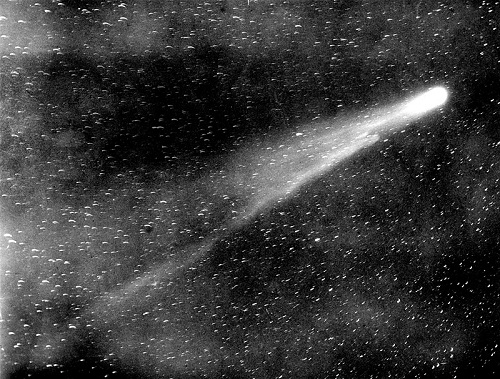
Comets only develop tails when they are close to the Sun. When they are far from the Sun, comets are exceptionally dark, cold, icy objects. The ice body is called the core. It makes up 90% of the comet's mass. The core consists of various types ice, dirt and dust. In turn, ice includes frozen water, as well as impurities of various gases, such as ammonia, carbon, methane, etc. And in the center there is a small core of stone.
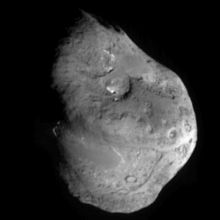
As it approaches the Sun, the ice begins to heat up and evaporate, releasing gases and dust particles that form a cloud or atmosphere around the comet called a coma. As the comet continues to move closer to the Sun, dust particles and other debris in the coma begin to be blown away due to the pressure of sunlight from the Sun. This process forms a dust tail.
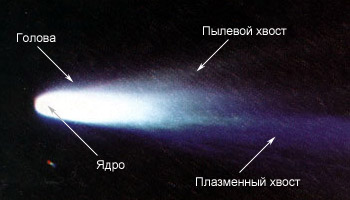
If the tail is bright enough, we can see it from Earth when sunlight reflects off dust particles. As a rule, comets also have a second tail. It's called an ion or gas, and it forms when core ices heat up and change directly into gases without going through a liquid stage, a process called sublimation. The residual gas is visible due to the glow caused by solar radiation.
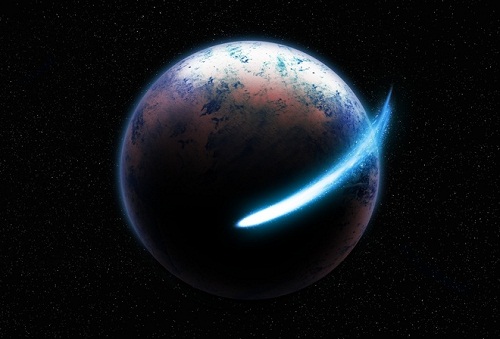
After the comets begin to move in reverse direction from the Sun, then their activity decreases, and tails and coma disappear. They turn into a simple ice core again. And when the orbits of comets return them to the Sun again, the head and tails of the comet begin to form again.
Comets have a wide range of sizes. The smallest comets can have a nucleus size of up to 16 kilometers. The largest core was observed to be about 40 kilometers in diameter. The tails of dust and ions can be huge. Comet Hyakutake's ion tail extended over a distance of about 580 million kilometers.
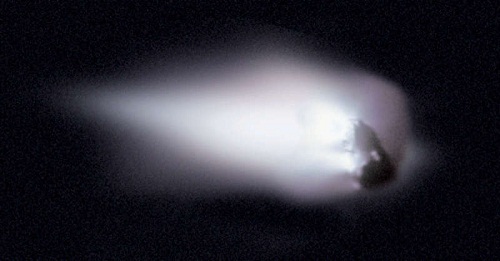
There are many versions of the formation of comets, but the most common is that comets arose from the remains of matter during the formation of the Solar System.
Some scientists believe that it was comets that brought water and organic substances to Earth, which became the source of the origin of life.
Meteor showers can be observed when the Earth's orbit intersects the trail of debris left behind by a comet.
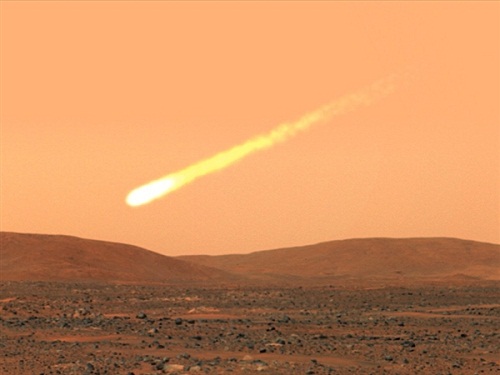
It is unknown how many comets exist, since most have never been seen. But there is a cluster of comets called the Kuyper Belt, located 480 million kilometers from Pluto. There is another such cluster surrounding the solar system called the Oort Cloud - it can simultaneously contain more than a trillion comets that are moving in different directions. As of 2010, astronomers have discovered about 4,000 comets in our solar system.
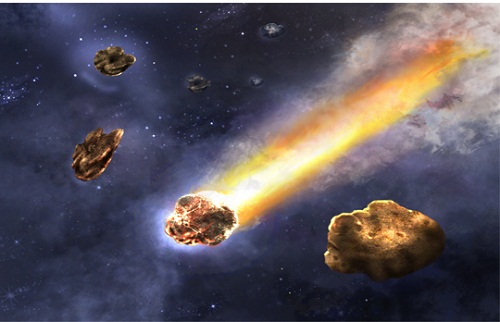
To a greater extent, seeing a comet is a miracle that many dream of seeing at least once in their life. But in extremely rare cases, comets can cause problems on Earth. Most scientists believe that a very large asteroid or comet may have struck the Earth approximately 65 million years ago. As a result, the resulting changes on Earth led to the extinction of the dinosaurs. Very large asteroids, as well as very large comets, could cause severe damage if they reached Earth. However, scientists believe that major consequences, like the ones that killed the dinosaurs, occur once every few hundred million years.
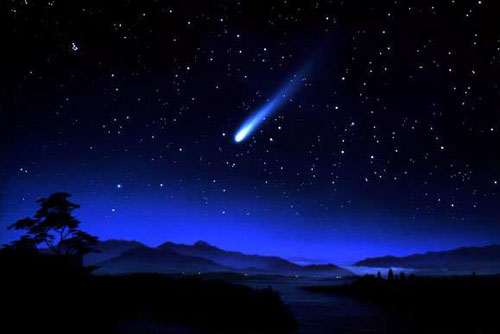
Comets can change direction for several reasons. If they pass close enough to a planet, the pull of that planet's gravity can slightly change the comet's path. Jupiter, the most big planet, is the most suitable planet to change the path of a comet. Telescopes and spacecraft captured images of at least one comet, Shoemaker-Levy 9, as it crashed into Jupiter's atmosphere. In addition, sometimes comets moving towards the Sun fall directly into it.

Over millions of years, most comets gravitationally fly out of the solar system or lose their ices and disintegrate as they move.
© Inga Korneshova article written specifically for the site 100facts.ru
